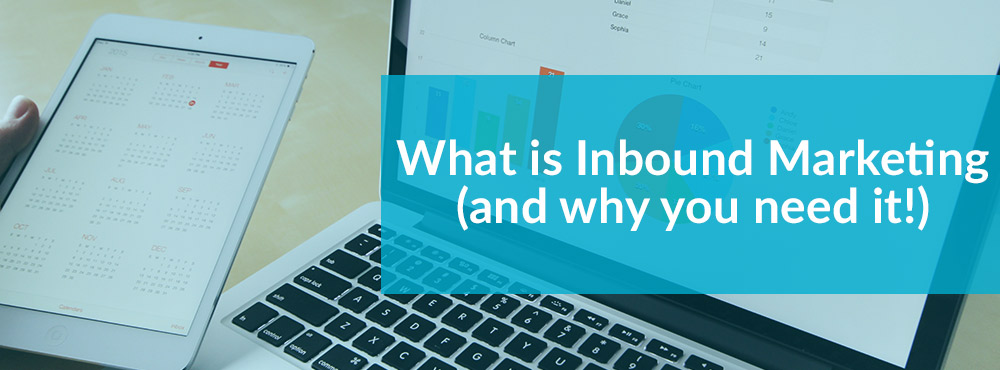Inbound marketing is creating and sharing relevant and useful content with your target audience at specific stages of their buyer journey.
Instead of one message fits all, inbound marketing means you talk to your customer at the right time and in the right context and when they are ready to buy. It’s all about meeting them in the moment.
Your messaging is in tune with them which means there’s more chance they will welcome what you have to say, be more engaged, and – the ultimate goal – be more likely to convert.
So, how does it work?
We can break it down into the three stages.
But first, let’s put the traditional ‘funnel’ to one side and introduce you to the ‘flywheel’ and HubSpot – the clever people behind this approach which is being adopted daily by marketing organisations and businesses across the world (and before you ask, it’s not the latest fad or a gimmick, HubSpot has 44,000+ customers in over 90 countries).
The flywheel comprises three key stages of the customer journey: attract, engage and delight:

Attract – obvious really, this is where you raise awareness and show your expertise as a credible and trustworthy brand so as customers start to take note, like what they see, hear and read, take more of an interest and start to follow you.
Engage – next step, the customer actually gets in touch in some way, at which point you can start to prove your expertise and helpfulness further with closer communication and interaction. Offer solutions, build rapport, empathise with their pain points and start to nurture a relationship.
THE END RESULT – THEY WANT TO DO BUSINESS WITH YOU OR BUY A PRODUCT OR SERVICE FROM YOU!
Delight – but it doesn’t end there, a happy customer is going to be the best advocate and promoter of your business. Building loyal customers will naturally bring you more sales.
How to develop an inbound marketing strategy
Attract – the secret here is to truly understand your audience and all of their buttons (their motivations, likes and dislikes, their biggest hurdles and fears, and, of course, how they are likely to view your offering). Only by putting yourself in their shoes can you relate to them properly, understand them and start to serve up content that they ‘get’.
We like to draw up audience personas – this way we can really get under the skin of our audience (more on this in another blog so be sure to revisit MM soon). You can also speak to your customer-facing staff from sales or customer service as their insight into your existing audience will help enormously. And don’t forget, there are tools available too, to help you understand how your audience is searching online, including the context around their search. If you’ve got five minutes, have a read of another one of our blogs which explains why context is suddenly so important: How will content marketing change following the BERT update?
Content comes in all sorts of guises, here are a few of the most obvious ones for starters that fit really nicely into the ‘attract’ stage:
- blogs
- ‘how to’ guides
- ebooks
- white papers
- social media
- infographics
- video
- podcasts
- guest articles
Engage – this is all about the added value you have to offer your audience. Now, you’ve got them interested and ready to talk to you, you need to work hard to bridge any remaining gap and really get close to them.
Do this by providing the added value content they need at this stage of their journey. They are giving you plenty of potential buying signals, so following GDPR, you may be able to get directly in contact with them or invite them to get in touch with you.
Here are a few ways to do so:
- Invite them to join your next webinar or (social distancing) event
- Send them a highly personalised email with dynamic content relevant to them, it might be a case study they can relate to, for instance
- Look at offering incentives (exclusive to them)
- Give them access to some of your gated content – perhaps a trends report or new product release
It’s all about making them feel extra special, getting them to believe and trust in you, and ultimately wanting to spend money with you. Tah Dah – another customer!
Delight – never stop your inbound marketing strategy at the sales stage, dedicate some serious time to what happens after the purchase. After all, you’ve worked hard to capture a new customer, now you need to nurture and look after them, give them the best experience ever, and watch as they become your best brand promoters.
You can capture customers’ delight many ways, here are just a few:
- Reviews
- Case study/testimonials
- Annual surveys
- Social polls
- Regular updates/offers
- Loyalty schemes
How does content marketing help?
High quality content underpins a successful inbound marketing strategy.
How can you measure inbound marketing?
If you don’t look at the metrics behind your inbound marketing activity you might as well pack up and go home! Measurement will provide the insight you need to understand what is working and what isn’t; where you’re wasting budget potentially and where you need to put more to support growth.
There are limitless ways to measure activity throughout your flywheel and some are easier to track then others.
Here’s a list of some of our favourite ones:
- page views
- online article links
- brand mentions
- downloads
- form submissions
- click-through rate
- website conversion rate
- email subscribers
- content shares
Get in touch
We really hope you’ve found this article useful. It’s part of a whole bunch of topics we are currently working on around inbound marketing, HubSpot, content marketing, etc, etc, because it’s something we feel passionate about; not only that, we can see what a real difference it can make to businesses right now.
If you would like to explore inbound marketing further, understand the results we have achieved for our clients with inbound strategies and learn more about how we could help your business, get in touch with a member of the Media Matters team today. We love to chat!





